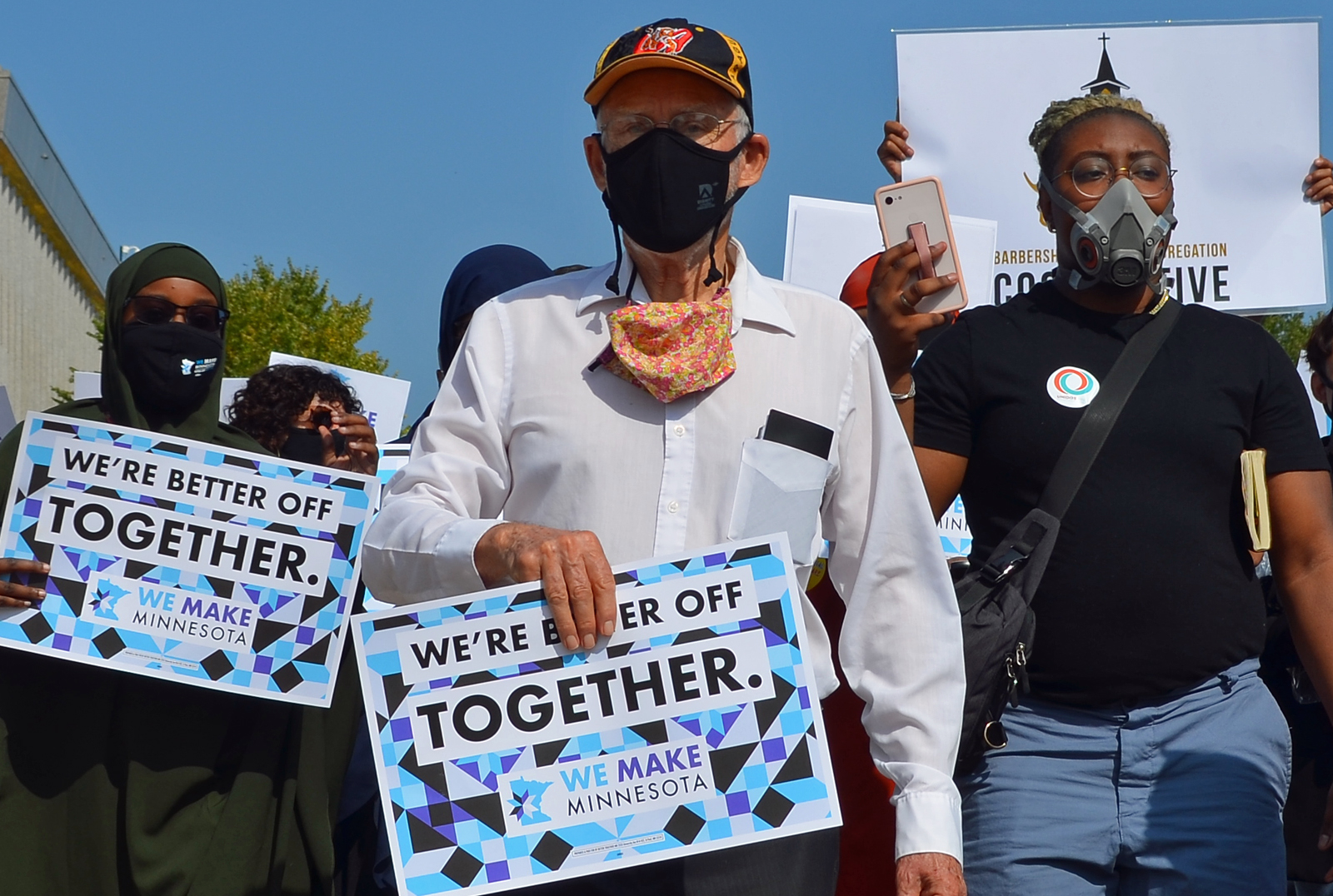

Share
Don Slaten has been volunteering in support of his union’s political program for years. Never has he seen a campaign season like this one, marked by social distance, early voting and a highly polarized voting public.
“It’s just unreal,” said Slaten, a retired member of Machinists Local Lodge 459 who became active in local politics in the mid-1980s. “I’ve never seen anything like this before.”
In an election cycle with no playbook, Minnesota’s unions have adjusted their approach to politics.
Physical distance is now baked into the Labor 2020 campaign strategy, with phone and text banks taking the place of most door-to-door canvassing. And because so many voters are looking to cast their ballots early, unions have sped up their campaign timetable.
Still, the objective of labor’s political work – turning out union voters in support of labor-endorsed candidates, from the local level to the highest office in the land – is as urgent as its ever been.
“We’re treating every day between now and Nov. 3 like Election Day,” said Kera Peterson, president of the St. Paul Regional Labor Federation, which coordinates Labor 2020 volunteer work in the east-metro area. “The stakes really couldn’t be higher.”
Ambitious goals
In thousands of phone, text and worksite conversations, union volunteers are countering the divisive rhetoric of President Trump and his Republican allies with a vision that reflects the very heart of the labor movement. Unity, Minnesota AFL-CIO President Bill McCarthy told volunteers before a virtual phone bank last month, will carry the day Nov. 3.
“This is our moment, brothers and sisters, to show Donald Trump and politicians like him that we refuse to be divided by race, religion and where we come from,” said McCarthy, the state’s highest-ranking labor leader. “We must deliver a decisive win Nov. 3 because everything is on the line.”
Unions aren’t just talking about unity, either. They’re backing it up with action, working in coalition this year with like-minded organizations to boost all Minnesotans’ participation in the election.
The state AFL-CIO, Education Minnesota and SEIU Minnesota State Council are part of a broad coalition of faith, community and advocacy groups that staged a voter registration fair Sept. 23 in St. Paul, followed by a march to the Capitol.
“We pull through by pulling together,” Imam Asad Zaman said during a rally on the Capitol grounds. “Together, we represent the beauty and fabric of this state. Black or white, Asian or Latino, Indigenous or newcomer, we make Minnesota.”
Zaman and other speakers offered of a vision of their state in which all Minnesotans enjoy access to fully funded health care, child care and education, as well as a clean environment, safe communities, livable wages, paid time to care for one another and freedom from police brutality.
“We have the ability to transform our state and build a new normal,” AFSCME Council 5 Executive Director Julie Bleyhl told volunteers at a virtual phone bank with St. Paul Mayor Melvin Carter last month. “And the work you are all doing this morning is essential to not just improving the lives of union members, but all Minnesotans.”
Cutting through disinformation
On the phones, volunteers like Connie Beissel, a recently retired member of the National Association of Letter Carriers Branch 9, said it’s rare to reach anyone who hasn’t already made up their mind about the election.
“They are just totally for or totally against,” Beissel said. “They know which way they’re going, and they don’t mind saying. And more times than not, the people I talk to have already voted.”
Even so, given everything that’s on the line this year, it’s critical to leave no stone unturned. Slaten, the retired Machinist, recounted a conversation with one woman who had requested a ballot by mail for herself and her children, but was unsure about whether to send it back.
“I told her, ‘You know you can go vote early by going to city hall, right?’” Slaten said. “And she said, ‘I can?’ She hadn’t a clue.
“There’s so much disinformation out there, no matter how much good information we put out, it still isn’t getting through to a lot of people. So that conversation made the whole day worthwhile.”

